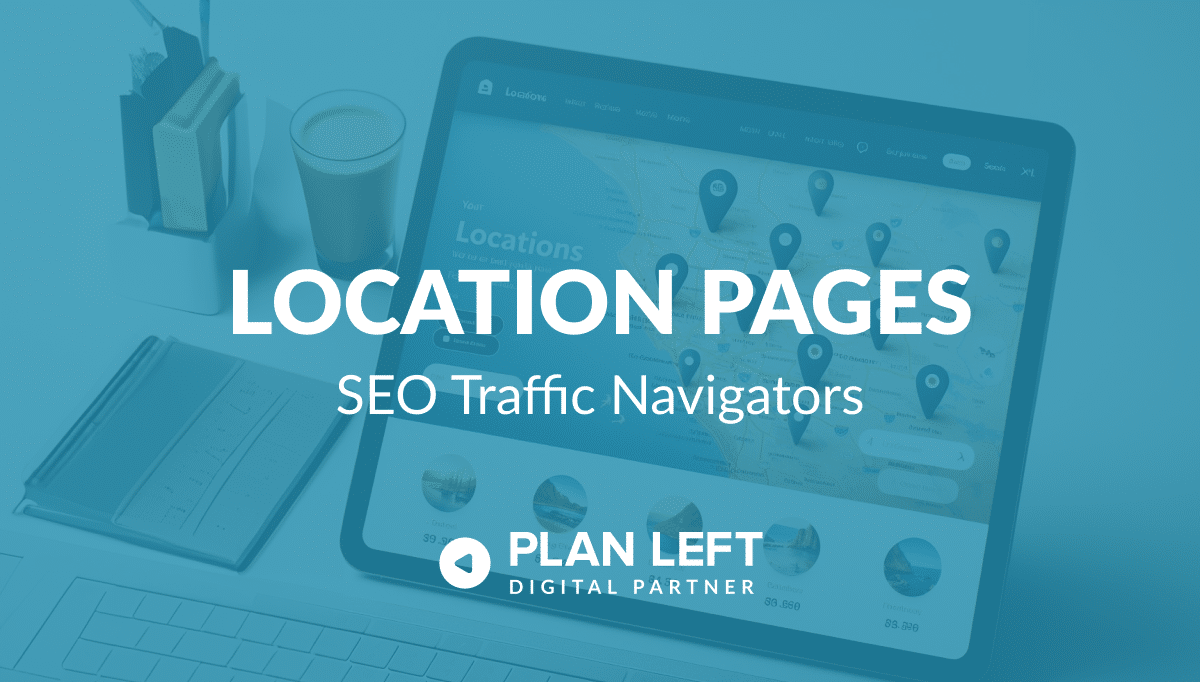
Location pages are the lighthouse of local SEO. Think of them as your business’s friendly neighborhood guides, leading people right to your doorstep in the busy online world. They’re so much more than just facts and data; they’re the bridges connecting your business with its community.
Location Pages – Not Your Regular Landing Page
Location pages are your business’s personal profiles for each of your physical locations. Whether a national or small-town brand, they’re like mini-homages to each location, showing off what’s cool and different about it. You get to dish out the nitty-gritty – what you offer, when you’re open, and how folks can get in touch.
Running a restaurant chain? Each spot has its own vibe and community influence. One has this incredible rooftop dining experience, and the other is about live tunes and good times. Location pages let you showcase each place’s personality. It’s like giving each of your locations its own spotlight moment on the web stage.
Making Location Pages That Drive Traffic to You
Think of your location pages as more than just digital name tags for your business. They’re an opportunity to showcase the unique personality of each place you call yours. Keep your NAP (Name, Address, Phone number) consistent, but also infuse each page with the character of its location.
Connecting with your local community goes beyond being a business in the area but becoming a part of the local tapestry. Does your café sit right next to an iconic downtown mural? Maybe your bookstore is the go-to spot for local author nights? Mention these differentiating aspects to create a connection with your local audience.
Consider how your business interacts with its surroundings. If your bookstore hosts local author nights, share images or stories from these events. Use phrases like “just steps away from the iconic mural” or “proud host of the popular monthly local authors’ night” to give a sense of place and community involvement. Highlighting these one-of-a-kind aspects helps create a deeper connection with your local audience.
But don’t stop there. Engage with local events and happenings. If there’s a street festival or a community project, participate and then showcase this involvement on your location page. Did your team volunteer at a local charity event? Share photos and a brief story about the experience. This not only shows your commitment to the community but also makes your business relatable and approachable.
Remember, your location pages are a window into how your business fits into the local scene. By weaving in stories of community engagement and local partnerships, you’re not just selling a product or service but inviting customers into a community and a story they want to be part of.
Getting Mobile-Friendly
Fact— a whopping 387 billion dollars were spent by folks shopping on their phones in 2022. So, making sure your location pages are mobile-friendly is vital. Remember, going mobile-friendly isn’t just about keeping up with the tech but connecting with your customers wherever they are. It’s like rolling out the red carpet for them right on their phones.
Here’s how you can make your pages a hit with the mobile crowd:
- Speed is Key: Nobody likes waiting, especially when they’re on the move. Make sure your pages load quickly and efficiently. Keep those images light and the code clean.
- Easy Peasy Navigation: Think thumb-friendly. Your menus should be easy to scroll and navigate. Also, make sure your contact details are big and bold – nobody should have to squint to find out how to reach you.
- Tap to Call: We’re all about convenience, right? Make your phone numbers a simple tap away. It’s like saying, “Hey, give us a ring anytime!”
- Local Keywords for the Win: Sprinkle your content with local keywords. If you’re a café in Seattle, phrases like “cozy coffee spot in Capitol Hill” can really boost your local search game.
- Looks Good on Any Device: Your site should look great on any device, whether it’s a phone, a tablet, or a desktop.
- Test, Test, Test: What works on one device might be a flop on another. Keep testing your site on different gadgets to make sure it’s always looking and working its best.
Where to Start with Local SEO & Location Pages
Optimizing location pages for search engines is like setting up digital signposts that guide people right to your doorstep. You want to be found easily and conveniently. By focusing on certain elements, you’re not just optimizing for search engines but creating a digital space that’s welcoming and easy to find for your local community. It’s about making your business a familiar and convenient choice for those nearby.
Here’s how you can make your location pages a beacon for local searches:
- Local Keywords: Start by sprinkling local keywords throughout your content. If you’re a pizza place in Austin, use phrases like “best pepperoni pizza in Austin.” It’s like using the local lingo to chat with your neighbors.
- Voice Search Optimization: Digital assistants like Siri and Alexa are in almost 70 million US homes, which means optimizing for voice search is no longer a question of if you should, but why you haven’t already. Use natural, conversational language in your content. People tend to use full sentences and questions in voice searches. For example, include phrases like “Where can I find a late-night pizza place in Austin?”
- Meta Titles and Descriptions: These are your digital billboards. Make them special for each location. Instead of just “Joe’s Pizza,” try “Joe’s Pizza in Downtown Austin – Spicy Pepperoni Delight.”
- Google Maps API Integration: This is a game-changer. Embedding a Google Map on your location pages helps people find you easily and boosts your local SEO. It’s like giving your customers a GPS directly to your door. Plus, it’s a visual cue that you’re part of the local landscape.
- Internal Linking: Link your location pages to other relevant content on your site. This creates a web of connections, guiding visitors to explore more about what you offer.
- Visuals and Directions: Add photos of your location, especially those that highlight its uniqueness. If your restaurant is home to a famous chef, brag about it! Also, provide clear directions – not everyone uses GPS. Some folks appreciate a good old-fashioned landmark-based direction.
- Parking Information and Accessibility: If parking is a challenge near your location, give a heads-up about where to park. Also, include information about accessibility features such as wheelchair ramps or Braille menus. It’s like telling guests where to hang their coats at a party – it just makes things easier and more inclusive.
- Reviews and Testimonials: Showcase what locals are saying about you. 97% of those searching for local businesses will read reviews. Positive reviews are like personal recommendations from the community.
Local Presence With Effective Location Pages
Location pages are a vital piece of your business’s online identity. By crafting each page to be different, engaging, and resonant with locals while also sticking to the Local SEO practices, you’re setting up your business for a significant boost in local search visibility. Remember, the journey to mastering local SEO starts with harnessing the power of well-crafted location pages.
Looking to elevate your local SEO game but not sure where to start? Reach out to Plan Left. Our team of experts is ready to help you navigate the complex waters of local SEO and turn your location pages into beacons that draw in your local community. Let’s make your business the talk of the town. Contact Plan Left today and start your journey to local SEO success.
Explore Latest Posts
Google updated its documentation around troubleshooting the loss of website rank after the Core update completed its rollout, along with ... read more
May 3, 2024
Back in 2021, Google’s Martin Splitt mentioned Centerpiece Annotations during a Duba webinar, and earlier this month, Gary Illyes mentioned ... read more
April 30, 2024
Since the last round of Core and Spam updates knocked nearly 40% of websites out of Google’s search index, it ... read more
April 26, 2024
MARKETING insights
Join the Thousands Who Receive Our Twice-Monthly Newsletter.
It's hard to keep up. Our newsletter is packed with buyer behavior insights, the latest marketing and technology updates, work/life balance tips, and—because we ❤️ our support staff—adorable pets looking for forever homes. Only twice per month. No clogged inboxes. You can't say no.




